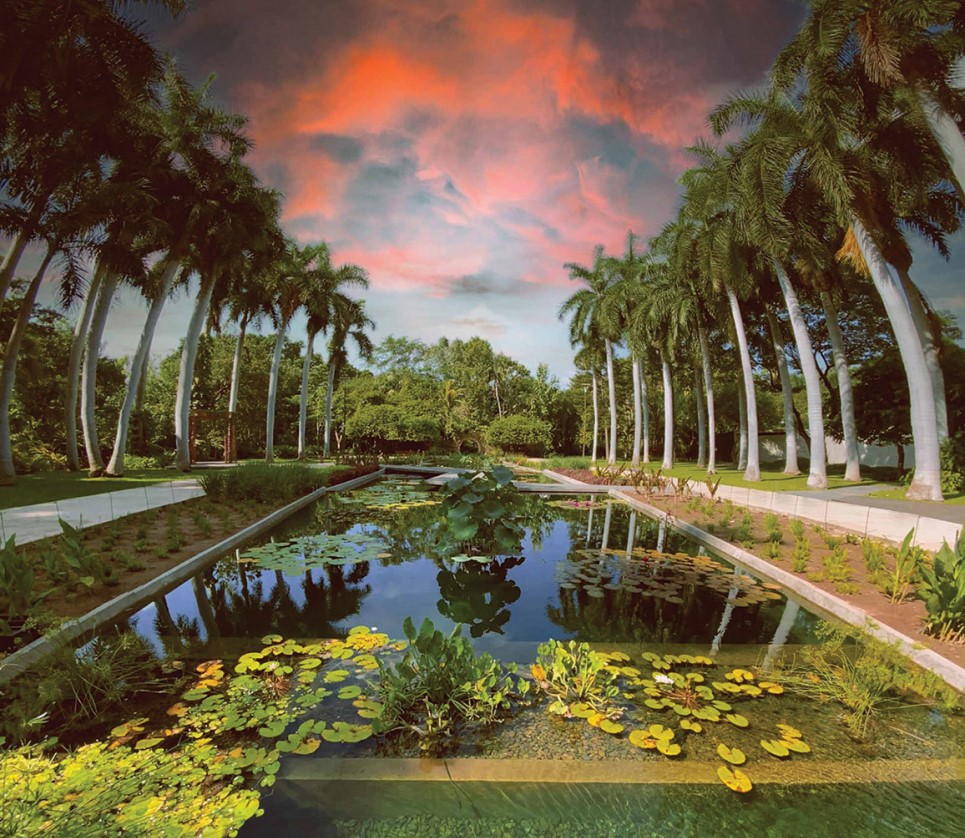
Big ponds and lakes have the same water quality and clarity issues as smaller features, but most of our small-scale solutions don’t scale up well. We’ve had to develop a different strategy that combines biology and physics to deliver clear water in features over 50,000 gallons.
The Culprits
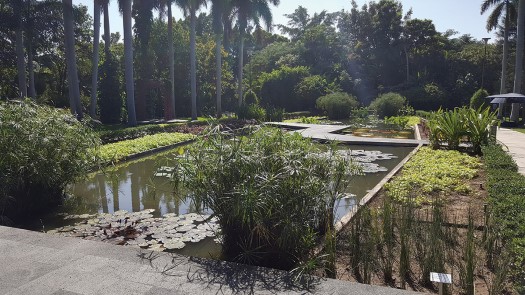
When it comes to a lack of clarity, water is beset by two major offenders: suspended solids and living organisms. Most living organisms are relatively minor offenders. Clouds of Daphnia and other protozoans are a welcome sight for informed contractors and hobbyists who know they help consume and clear up plankton blooms. They’re also a near-perfect food for smaller fish and fry.
The No. 1 culprit of pond complaints, algae are a different story. There are almost as many ways to control that pesky green water and its slimy brethren as there are species of pond algae. Ultraviolet light that disrupts algal reproduction, ionizers that breach cell walls, barley and other organics that inhibit growth, a multitude of chemical algaecides — all can treat or prevent algae blooms. The best way to deny sufficient nutrients for algae blooms to occur in the first place is as easy as properly planting the pond. One needs only to determine what, where and how much to plant.
.
Suspended solids don’t respond to any of those treatments, but they do follow simple physical laws. The larger the solid, the easier it is to trap in filter media. The heavier it is, the faster it will fall out of suspension. This is why we use flocculants, which clump particles together, facilitating their settling and removal.The velocity of the water also plays a huge role. The faster water moves, the more solids it can carry along with it. The slower the velocity, the less sediment it can carry. Water that is perfectly still will eventually drop all its suspended solids. This makes good intuitive sense. Rushing floodwaters scour everything in their path, dumping mud and debris only when and where the water slows.
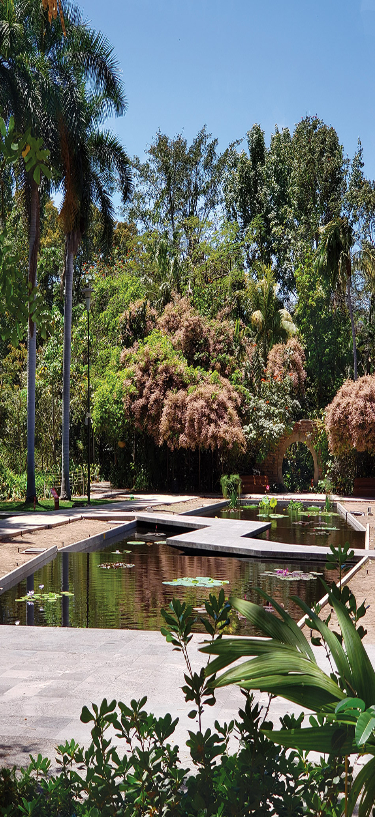
There are only two ways to remove suspended solids from the water column. The first is to filter out the gunk by intercepting in filter media, which will need to be cleaned or replaced. The second is to slow down the flow to drop the solids out of suspension, the process of sedimentation. The water will clear, sometimes amazingly quickly. What happens to the settled solids becomes the next very important question.
Whether filtered out or trapped in a still pocket, the stuff that settles out of pond water is a chore to clean. Inherently sticky fish wastes and clay cling to surfaces tenaciously, usually requiring high-pressure water to flush them away. Hand cleaning filter media, whether pads, ceramics or lava rock, requires a spray head and a strong jet of water; even self-cleaning drum filters need to use high-pressure pumps delivering 60 psi or more to blast screens clean.
Not only are filters a pain to clean, but there’s also a practical limit to the size of pond that can be filtered this way. In my personal experience, ponds larger than 50,000 gallons start to become maintenance hogs if filter cleaning is part of their weekly or monthly regimen. At some point, the debris that builds up in the larger fishponds in this area of the world (100,000 gallons and up) surrounded by trees and shrubs, littered weekly with grass clippings, overfilled with multiplying koi or goldfish (not to mention the almost universal overfeeding of the same) simply overwhelms the ability of ‘black boxes’ to keep up. I’d like to share a simple, scalable solution to clarify any sized pond.
Whatever you call them — gravel bogs, veggie filters, regeneration zones — we are all talking about planted gravel sediment traps. They’re extremely effective at removing solids by both interception and sedimentation, and they can be scaled up to clear bodies of water of any size.
It’s all about the physics. The faster water moves, the more total suspended solids it can carry. Slow the water, drop out the solids. Sedimentation, the chief method used in wastewater treatment, is very effective. There, water slows to zero velocity in settling tanks, where all the solids drop out of suspension. Gravel beds work the same way, though less efficiently than a settling tank. Water slows as it passes through, under and around the gravel, dropping suspended solids into the gravel as velocity decreases. At the same time, larger particles are intercepted and physically trapped in the smallest spaces between the stones. When properly designed, over time, gravel beds can clear the water of any pond or lake, as long as the rate of removal exceeds the flow of sediment into the lake.
Considered passive when the water simply flows over the gravel, it’s the active variety, where water is pumped through the gravel, that’s most efficient, as long as the flow of water can be slowed by the gravel. Too much flow or too little gravel will allow the water to channel and escape without slowing and dropping its solids.
Plantings Are Essential
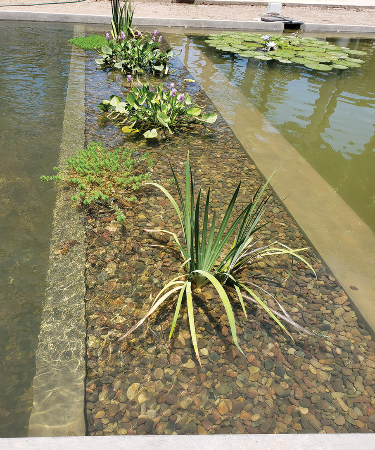
Planting the gravel optimizes not only the trapping of solids, but the removal of toxins and nutrients as well. Roots grow down into the bed between the stones, further slowing the water. They keep the flow from channeling by growing fastest in the areas of greatest flow, where more nutrients will pass over them. In this way, a planted gravel bed is self-regulating and self-balancing, growing in proportion to the nutrients in the water and turning hard-to-remove organic compounds into easily harvested and composted greens.
Well-planted beds will remove all the nutrients in the water, outcompeting and starving all the algae in the pond — not just the one-celled “green-water” species. Unlike ultraviolet light, which only affects the unicellular algae pumped past the lamp, planted gravel beds also suppress floating mats of blanketweed and attached string algae. Also known as veggie filters, they’ve always been popular with in-the-know pond builders precisely because they filter out so much, yet they don’t have to be cleaned as often as other filters. It’s not unusual for gravel bogs to go years between cleanings, though their effectiveness may steadily diminish over time.
The reason their effectiveness declines is because, strictly speaking, these aren’t bogs at all — at least not on purpose. Botanically, bogs are flooded beds of vegetation decomposing slowly or not at all because of a lack of oxygen. That can and does happen in an older, neglected or poorly designed gravel sediment trap. Without enough oxygen in the gravel, trapped organic wastes produce smelly and dangerous methane and hydrogen sulfide. Pathogenic, disease-causing bacteria prefer these anaerobic conditions as well.
Under ideal conditions, planted gravel beds are exactly the opposite of true bogs. Good circulation of oxygen-rich water is the key. Aerobic, oxygenated water flowing slowly through the gravel and plant roots provides the perfect environment for plants, zooplankton and beneficial bacteria to thrive, removing nutrients and toxins and polishing the water.
Downflow vs. Upflow
For all their advantages, gravel beds still have their drawbacks, precisely because they are so good at trapping solids, planted or not. The two types of sediment traps are distinguished by the location and direction of water flow.
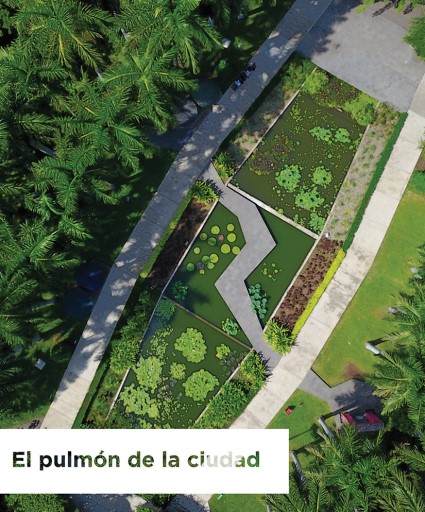
Downflow bogs are large pockets of gravel inside the pond at least 1 foot deep to as much as 4 or 5 feet deep. Water is drawn down through the gravel to a pump or intake manifold at the bottom of the gravel bed, giving rise to the term intake bog. Initially extremely effective because their sheer size enables them to hold enormous amounts of debris, these traps eventually succumb to their own success. No matter how large, the tons of debris generated every year in a well-stocked pond on a wooded site adjacent to any size lawn will eventually fill the spaces in even the largest intake bog.
Then what? Does the gravel bed just stop working? Apparently not. In many cases, water keeps reaching the pump or intake indefinitely. We’ve seen time and again that water will always find a path. A few open channels develop through what was once an open, three-dimensional lattice of gravel, but the velocity in the channels will be too high for the solids to drop out. No longer a filter, the gravel bed becomes just an intake.
No harm done, right? Not exactly. All the organic waste filling the rest of the spaces is cut off from oxygenated water. As in any real bog, it slowly begins decomposing anaerobically. Methane and hydrogen sulfide begin to build up, and the acidity steadily increases, eventually affecting the water quality of the rest of the pond. It may take years, but a decrease in water quality is unavoidable, and there’s no way to clean a submerged gravel bed 4 feet deep without major reconstruction.
Upflow bogs specifically address the long-term maintenance issue and have many other advantages over downflow bogs. The flow is, obviously, opposite. Water is pumped up through a shallow gravel bed typically only 4 to 8 inches deep, often through a slotted or perforated distributor. It slows as it flows up and out of the gravel, so solids drop out, assisted by gravity. Then, the cleaned water flows back into the pond. Because the water is being pumped through the gravel, there’s no need or reason to submerge the bed deeply. Upflow bogs often start a stream or waterfall, capturing solids before they re-enter the pond.Unlike the downflow variety, upflow bogs are accessible and generally easy to clean. The shallow bed can be agitated to release accumulated debris, which can be vacuumed or diverted before flowing back into the pond. Anaerobic zones don’t develop because the gravel is so shallow; oxygenated water gets pretty much everywhere. The gravel can never block the outflow from the pump, as it might block an intake, with one caveat — always use a check valve on the pump. That way, gravel can’t get sucked back down the pipe and into the volute of the pump when the power is turned off.
Most importantly, upflow beds can be located anywhere water will flow back into the pond — during initial construction or anytime afterwards. A new stream or waterfall can be proposed, adding visual interest as well as filtration. If a visual accent isn’t needed or desired, long, narrow gravel beds can be added along the perimeter of any existing pond or lake. Simply overlap a piece of liner over the water’s edge to ensure that water pumped into the gravel bed can only flow back into the pond. When planted, the gravel is practically invisible — the filter just looks like natural shoreline vegetation.
The drawback to all these shallow upflow bogs? They don’t trap and hold a tremendous quantity of waste, so they need to be cleaned. Even then, it’s difficult to keep the goop from re-entering the feature.
Enter the Eco-Blox!
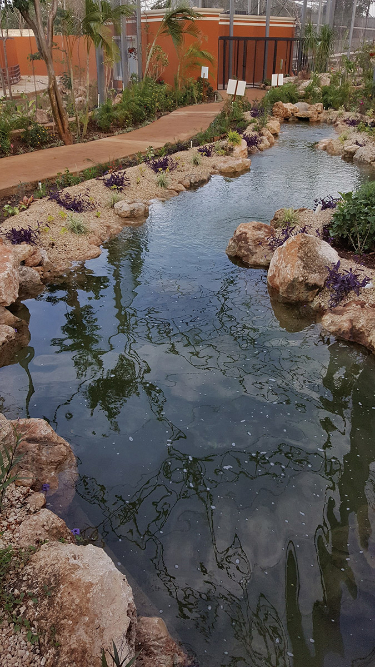
Here’s where the innovation comes in. Years ago, we noticed that whenever we built a deep headwater pool at the beginning of a stream, it would capture tons of sediment — more than a shallow gravel bed alone could — and the pond would stay noticeably clearer.
We had “discovered” the wastewater settling tank. The amount of muck collected was impressive, and the deeper we made the pocket, the better it worked. But the depth itself was a drawback. The tall sidewalls were difficult to cover with stone, and stepping into one by mistake was a real eye-opener — especially on a cold day.
Eco-Blox were the perfect upgrade to the headwater sludge collection pool, eliminating both concerns. All we needed was enough depth for the block, some gravel and a couple of inches of water — a minimum of 24 inches total, which was rarely an issue since the stream or waterfall was always elevated anyway. The mesh walls and partitions of the blocks slowed water even more quickly than the open pool, making the sedimentation process more effective. If the waterfall was higher than 2 feet above grade, we could even increase the rate of sedimentation by stacking the blocks in towers. And because we were starting at grade, we realized we could put a drain in these chambers to sluice out the collected sediment simply by opening a valve. Finally, it occurred to us that the bulkhead fitting in the bottom could also be used to bring water into the chamber. A tee on the outside of the liner at the bulkhead fitting would let water enter straight through, with the leg of the tee fitted with a buried valve and a pipe out to daylight. The system was born.
The Eco-Blox gave us a shallow headwater pool with a deep collection pocket ready for gravel and plants. Water pumped up from the bottom would slow as it rose into the block, shedding suspended solids as it worked its way up through the gravel and plant roots. Turning off the pump and opening the valve allowed me to backwash the pocket, pouring all that fertile goop right into the garden whenever I wanted. Turning the pump back on for a second flushed the block and plumbing. I just had to close the valve, and it was ready to go again.
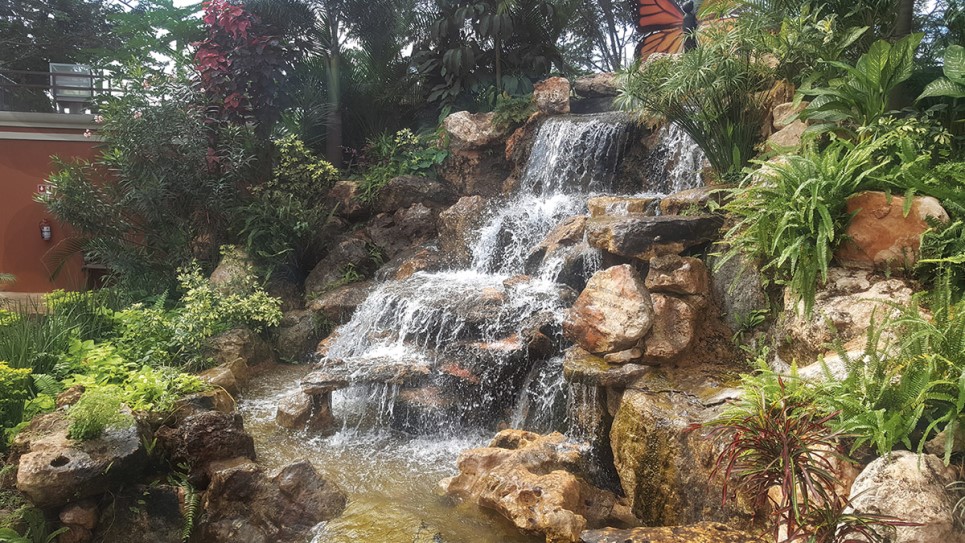
From there, it was a very short leap to the Eco-Blox settling chambers we install in almost all our ponds these days. We’ve made some changes to the original setup. Now, we use 3 or 4-inch Schedule 80 flanges (or larger) to make the bottom drain perforation bulletproof, and I bury cast-iron mechanical joint valves with 2-inch operating nuts and a 100-year service life for the ultimate in low maintenance. Other than size and capacity, they are the same gravel-topped settlement traps as before, but nowadays we market them as regeneration zones, borrowing from the natural swimming pool lexicon. It made sense to test the chambers where there are many huge handmade water features in a challenging climate with tons of nutrients, so we went to Mexico to put them through their paces under the most rigorous conditions. Let’s take a look at two new installations at a theme park that wanted to add water features to its new aviary and butterfly houses.
The Butterfly House
The fair at Xmatkuil, Mérida, Mexico had been a statewide favorite every November for many years when the local government decided to open it year-round. They felt it would need new attractions to keep folks coming, so they planned a water park, an aviary and a butterfly house for the fairgrounds.

My good friends from neighboring Mérida Yucatán, Lidia and Nacho of Jose M. Barroso, a multifaceted company specializing in high-end pool construction, asked me to help with the waterfalls and ponds. Since this was a new installation, I was able to design Eco-Blox chambers in multiple locations around the pond and in the waterfall itself. The design called for the ponds to be raised about 24 inches above the original grade to keep the occasional torrential rains from flooding them, so this was the perfect application for perimeter bogs. We built shelves along the edge of the ponds wide enough for the blocks, plus space for the narrow wall that separates the block chambers from the rest of the pond. Water pumped into the chambers from adjacent skimmers flows up and out the tops of the Eco-Blox, passing through a 6-inch layer of gravel before re-entering the pond. Plantings in the gravel easily handle the light organic loads produced by decaying vegetation, fish and insects. The Mariposario, or Butterfly House, has stayed crystal clear from the beginning, with never a hint of either turbidity or algae even when temperatures exceed 100 degrees for a month at a time.
To be fair, I can’t say the same about the water quality of the aviary, which is stocked with many species of waterfowl. All are fed daily, and all eat plants. The marginal aquatic plants in our perimeter gravel beds were mere appetizers — a first course for the voracious birds. The 30-odd swans, geese and ducks demolished everything green smaller than a tree. And, as you can imagine, the organic loads were huge. The gravel worked great trapping solids, and the bacteria growing in the beds kept the ammonia and nitrites (and smell) down, but ultimately, that only contributed more nitrates to the soup. The well-meaning staff replanted the beds two or three times, but as they couldn’t find plants the fowl wouldn’t eat, they just gave up. Without other plants to pull nutrients out of the water, nitrates and 90-degree days mean lovely green water. The point is, plants are as much a part of regeneration zones as bacteria, gravel and waste. If there are no ornamental plants to consume the nutrients, algae will happily fill that role.
Victoria Pool
Next up, another worst-case scenario: a retrofit to an existing pond fed by river water with severe turbidity and nutrient loads in an extremely hot climate.
I met Erika Pagaza during an International Water Garden and Waterlily Symposium (IWGS) at Longwood Gardens, where we were viewing the plantings and fountain renovation of the DuPont estate. Pagaza, the curator of an internationally renowned botanical garden in Culiacan Sinaloa on the west coast of Mexico, was there looking for advice. She cared for a pool designed specifically to showcase the garden’s Victorias, the world’s largest waterlily whose leaves can reach 6 feet in diameter. The pool was large — about 155 feet long and 50 feet wide, where a wide footbridge zig-zagged across the middle. Its 3-to-4-foot depth was perfect for growing the huge Amazon lilies in the extreme heat of Culiacan.
The problem was the sediment-laden brown water drawn in daily directly from the Culiacan River. The lilies didn’t mind, but the dirty-looking and unsightly pool was a cause of constant comment and complaint by garden visitors, especially the wedding photographers who used the bridge and pool for a backdrop. Cleaning the copious brown muck that settled to the bottom was a costly, time-consuming affair that required the area to be closed and fenced off every few months.I told Pagaza that we had the solution. We came up with a plan to build a chamber at each end of the large pool filled with Eco-Blox and fed by 9,000-gph pumps, two to each huge skimmer. The pool had been leaking and needed repair anyway, so we took the opportunity to install 4-inch bottom drains in every section of the pond. Each bottom drain had its own 4-inch valve but was also teed into a skimmer. That way, the skimmers would draw sediment-laden water from the bottom as well as from the surface. We installed additional bottom drains in the gravel-topped and planted Eco-Blox settling chambers to simplify cleaning them out. We explained that it could take the entire season for the plants to grow and the chambers to reach full-cleaning capacity.
We were way off. The pool was clear in a week, with the bottom visible for the first time Pagaza could remember. The leak wasn’t totally repaired, so muddy brown river water tops it off daily, but you’d never know it, aside from a slight tea-colored tint to the otherwise crystal-clear water. We were concerned that the full exposure to the Mexican sun and average temperatures over 95 degrees for six months of the year would allow some algae blooms to form; however, in the year and a half since we finished, the water has never clouded.
If this method will work under those conditions, chances are it will work for you!



A very very beautiful article. Big ponds have water quality and clarity issues. You have covered this with a great solution in this article.
Thank you for sharing, keep sharing more.